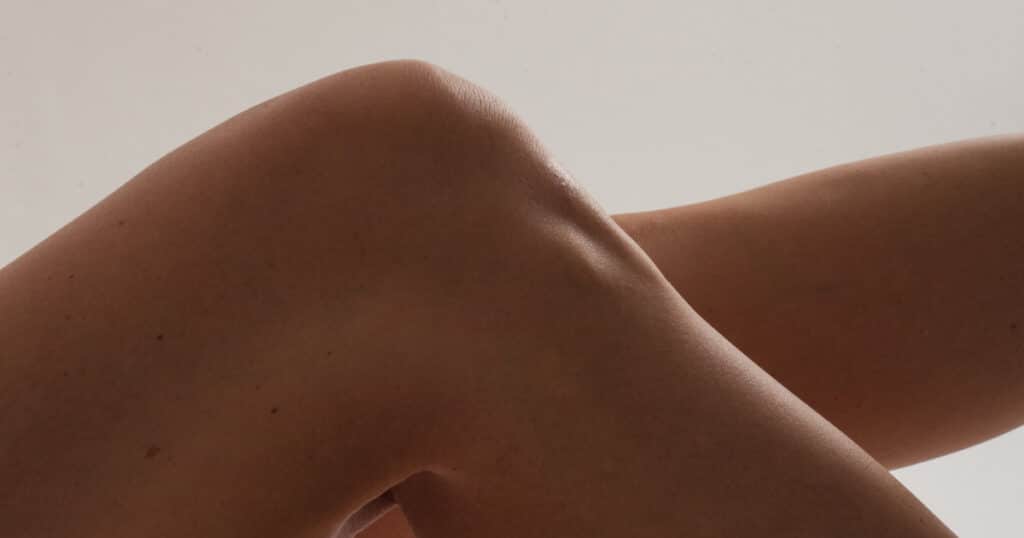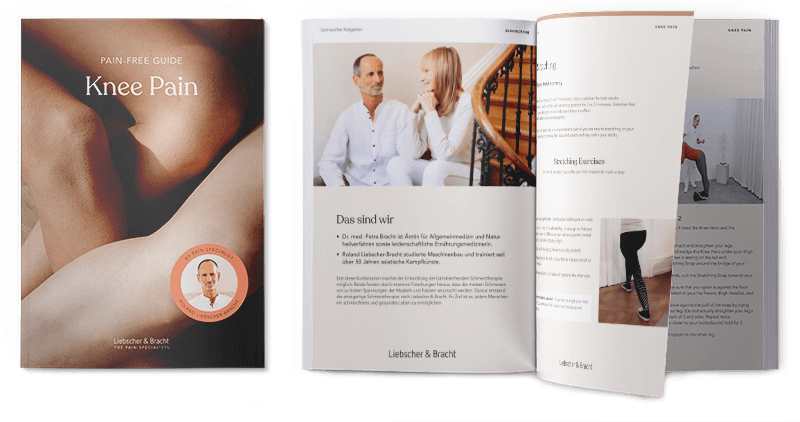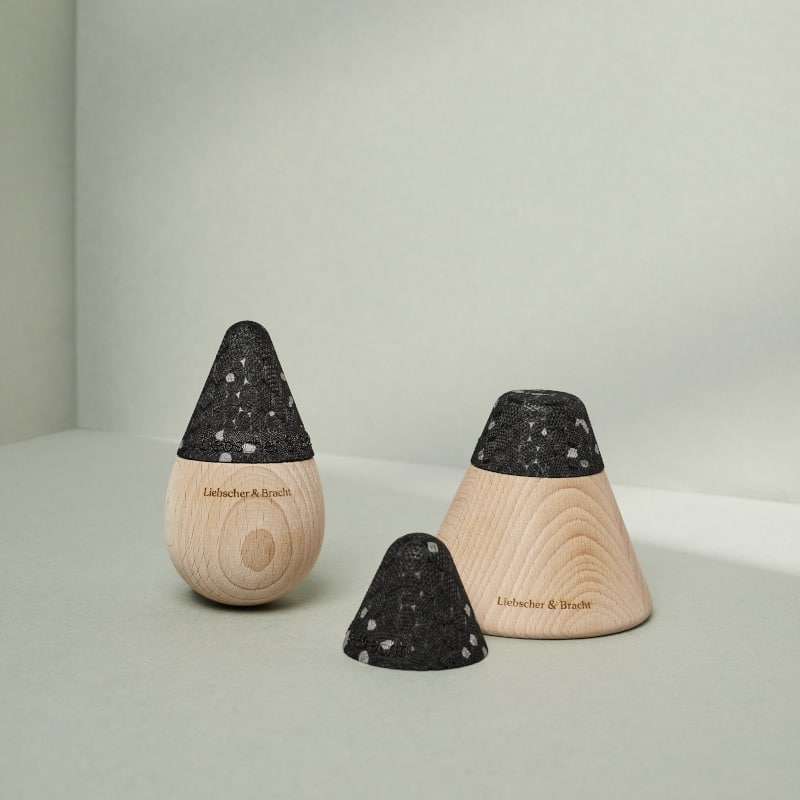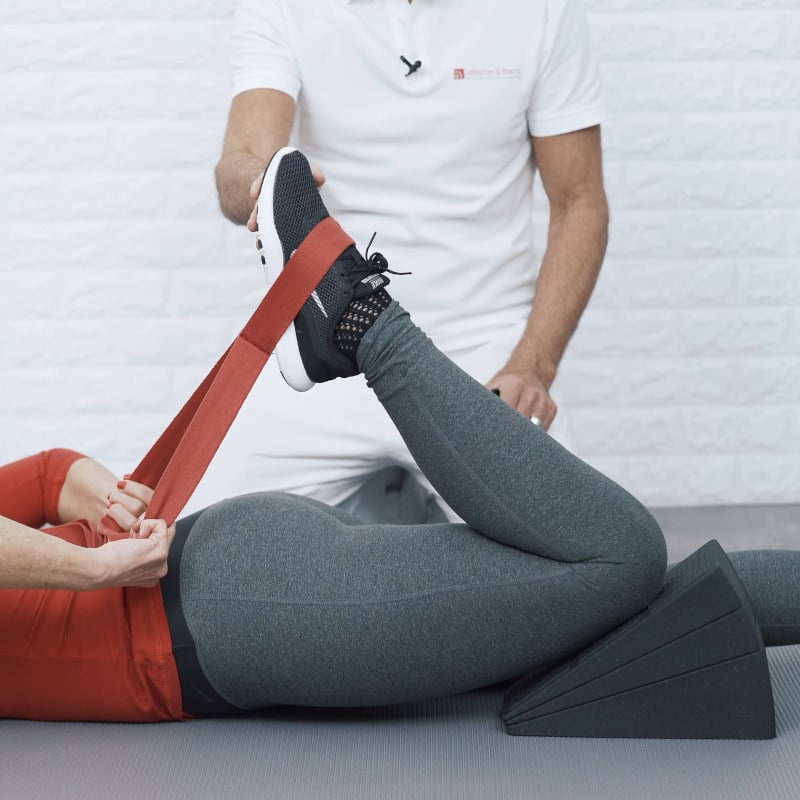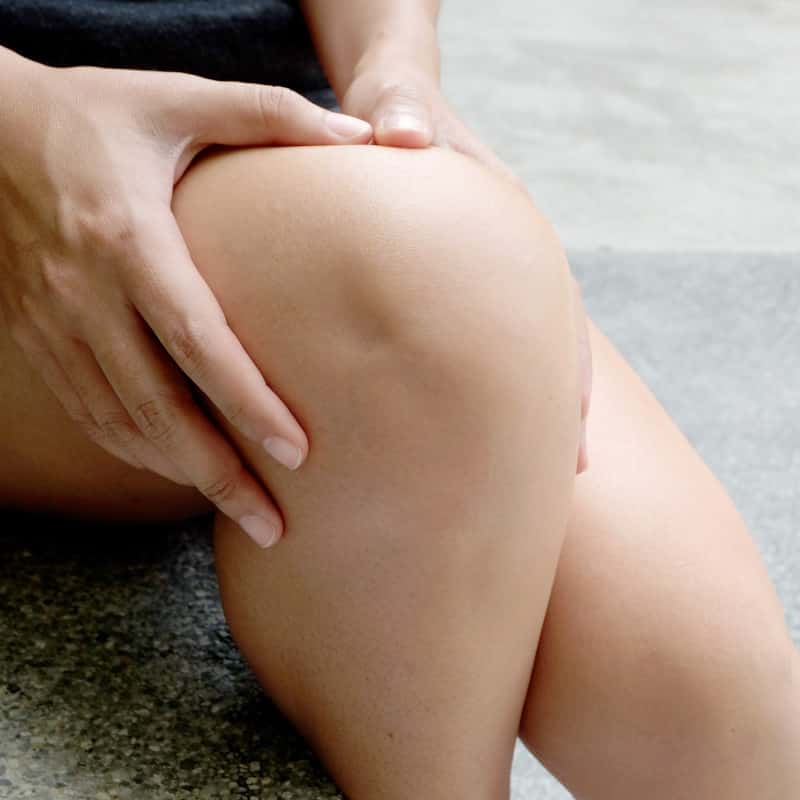This Knee Pain Relief Routine Helps Sore, Achy Joints
Our knees are busy joints, making many of our everyday movements possible. Because our lower leg hinges are so active, they’re prone to pain. The discomfort may be a slight ache after getting up from sitting for too long or more serious, like stiffness and swelling from arthritis.
If your knees are in need, our home routine may be able to help ease knee pain, depending on the cause. All you need for our program is the spherical handle from our Osteopressure tool set with the soft-pointed attachment. You can still do our exercises even if you don’t have our tool, use a whittled cork. If you are experiencing severe knee pain because of an injury, your knee can’t support weight, feels hot to the touch, has swollen suddenly, or you have a fever, do not do these exercises. Please see your doctor immediately. Our routine can help relieve knee pain caused by the following conditions:
Patellofemoral Pain Syndrome (Runner’s Knee)
The medical term for your kneecap is patella. Patellofemoral pain syndrome (PFPS) — or runner’s knee — is an overuse injury. It can be caused by playing sports that require running and jumping or injuries to the kneecap. The main symptom of PFPS is pain around the front of the knee that worsens when the joint is flexed or bearing weight. 1)
Arthritis
Arthritis is an inflammation of the joints. The knee is one of the most common joints where arthritis develops. Knee arthritis causes pain, stiffness, and swelling that makes movement difficult. Symptoms may worsen after inactivity (sleeping or sitting) or energetic movement. Although there are over 100 types of arthritis, the most common forms that develop in the knee are osteoarthritis and rheumatoid arthritis. Osteoarthritis is a degenerative disease, and it’s often referred to as ‘wear and tear’ arthritis. OA erodes the cartilage in your knee, leaving less space between the bones. If the bones grind together, bone spurs may develop. Rheumatoid arthritis is an autoimmune disease; your immune system attacks healthy synovial tissue covering the joints, which leads to swelling. Rheumatoid arthritis is a type of symmetrical arthritis, meaning it affects both knee joints.
Knee Bursitis (Prepatellar Bursitis)
Your knee is surrounded by tiny, fluid-filled sacs called bursae that minimise friction between bones, muscles, tendons, and ligaments. 2) Knee bursitis happens when a bursa becomes irritated and swells, usually from kneeling on a hard surface for an extended period, falling and landing on your knee, or injuring your knee. (In some cases, rheumatoid arthritis may cause knee bursitis.) Symptoms of knee bursitis are pain (especially when moving your leg), swelling, and a reduced range of motion.
Patellar Tendonitis (Jumper’s Knee)
The patellar tendon is a cord of tissue between the bottom of the kneecap and the top of the shinbone. The tendon and the muscles at the front of your thigh work together so you can extend your knee for running, jumping, and kicking. Overworking your knee, playing sports that require jumping or sprinting, resuming exercise after a long break, or suddenly increasing your physical activity can lead to micro tears and inflammation of the patellar tendon. This causes pain between your kneecap and shinbone. Climbing stairs and getting up after sitting can make the pain worse.
Iliotibial Band Syndrome (ITBS)
Iliotibial Band Syndrome is pain or an ache on the outside of the knee or hip. The iliotibial band is a tendon running from the top of the pelvic bone to the knee. If the tendon is overstretched and rubs against the knee or hip bone, it can become irritated, causing your knee to pop, click, or feel warm to the touch. Your iliotibial band may tighten if your hip abductor muscles are weak, your shinbone twists inward, or your foot is overly pronated. The tendon may make contact with a bone if you overexercise, don’t stretch thoroughly before exercising, or wear worn-out shoes.
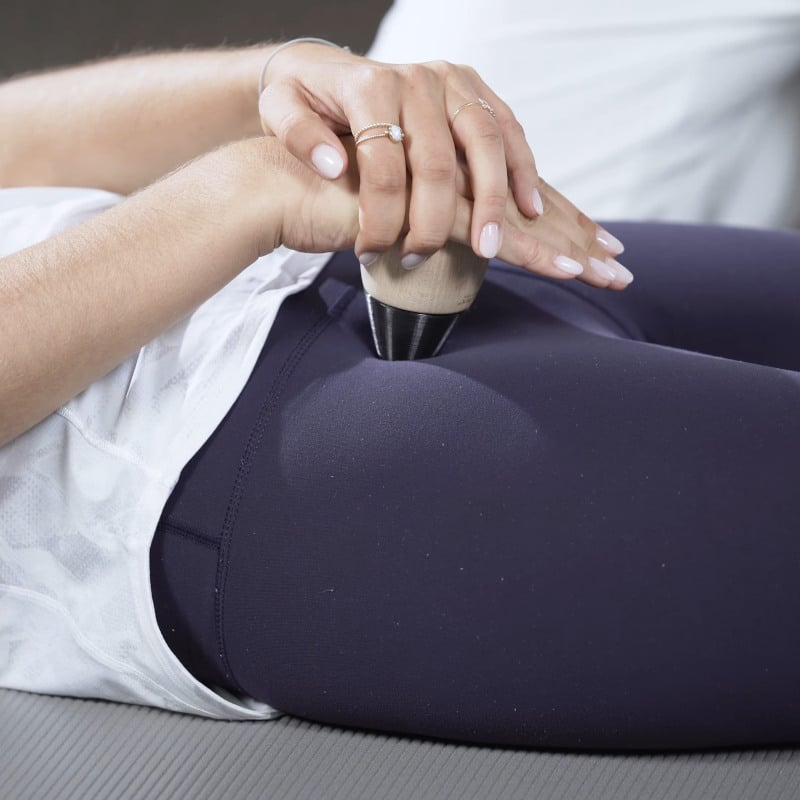
Exercise 1: Knee Osteopressure
You’ll need the spherical handle and soft rounded attachment from our Osteopressure tool set for this exercise. If you don’t have our tool, try using a cork.
- Lie on your back.
- Using both hands, press along the top of the hip bone on the side of your body that corresponds to your affected knee.
- Walk your fingers along the edge of your hip bone toward your crotch. Stop when you reach an area that feels like a rounded corner.
- Press around the area until you locate a spot that feels sensitive.
- Press your Osteopressure tool directly on this area. (This may feel uncomfortable, but it should not hurt. If your breaths become short or you tense up, decrease the pressure.)
- Press for 2 to 2.5 minutes. When you feel your body adjust to the pressure, press more forcefully or adjust the angle of your Osteopressure tool slightly.
- Finish and repeat on the other side if necessary.
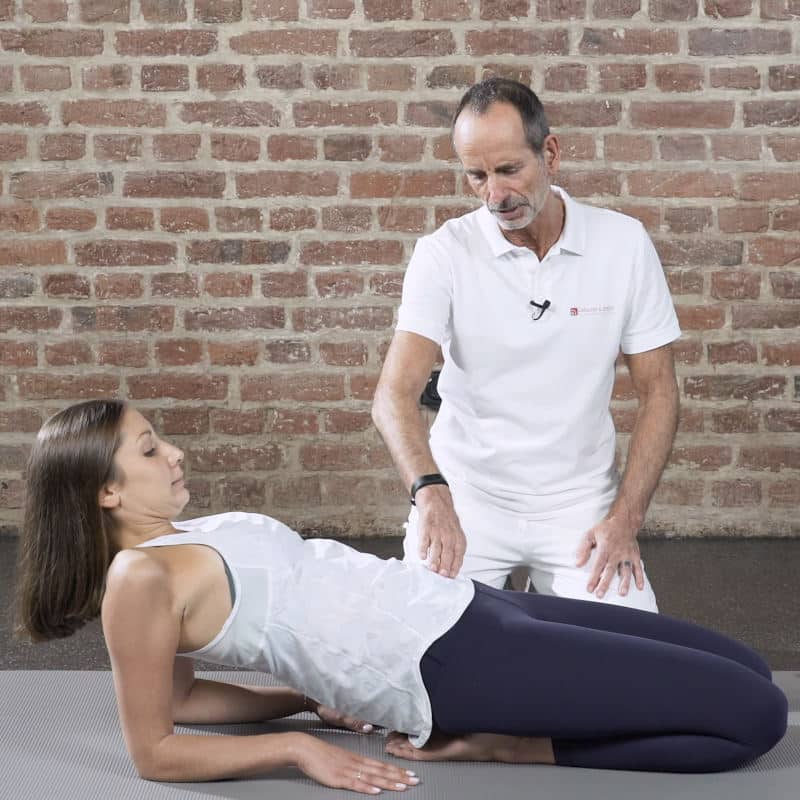
Exercise 2: Quadricep & Knee Stretch
- Get down on your hands and knees.
- Slowly lean backwards until you’re sitting on your heels. If you can’t sit down, place a pillow on your heels and go as far back as possible.
- Place your hands behind you on the floor and slowly lean your upper body back.
- Flex your abs, lift your pelvis slightly, and make sure your knees touch each other.
- Go back as far as you can. How far back you go will depend on how flexible you are.
- You’ll feel a stretch in your groin, along your thighs and around your knees.
- Be careful not to let your pelvis sink. Keep it raised slightly.
- Press the tops of your feet forcefully against the floor.
- Hold for 2 to 2.5 minutes.
- Slowly sit up and finish.
Your Relief Routine
To help relieve pain in your knee joint, perform our exercises 6 days a week and leave 1 day for rest. When it feels like your knee pain is getting better, you can adjust how often you exercise.
Sources & Studies
- ↑1 Gaitonde, D. Y., Ericksen, A., & Robbins, R. C. (2019). Patellofemoral Pain Syndrome. American family physician, 99(2), 88–94.
- ↑2 Rishor-Olney CR, Pozun A. Prepatellar Bursitis. [Updated 2022 Sep 6]. In: StatPearls [Internet]. Treasure Island (FL): StatPearls Publishing; 2023 Jan-. Available from: https://www.ncbi.nlm.nih.gov/books/NBK557508/.
If you have knee pain, you might also be interested in:
Knee Pain
Discover the causes and symptoms of knee pain, learn about common conditions, and find out what helps — and what doesn’t. Plus, more home treatment exercises.
Become a Knee Pain Expert NowKnee Pain Exercises
Knee pain doesn’t discriminate. Whether you’re young, old, these jumbo joints will ache at some point. This 3-minute stretching routine can help.
Relieve Knee Pain Now3-Minute Knee Bursitis Exercises
Knee bursitis develops when one of the bursae surrounding the knee becomes inflamed. Our exercises can help alleviate your pain and reduce the swelling.
Relieve Knee Bursitis Pain